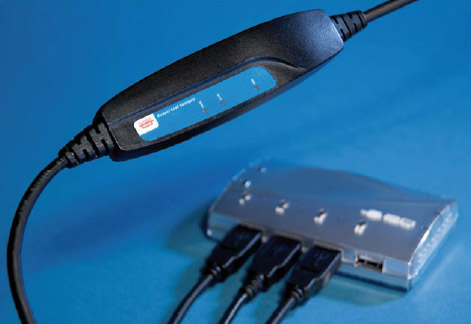Cars have come a long way since the first internal combustion engines. As vehicles have advanced, it has become necessary to have computers controlling more functions. A modern vehicle can have as many as 70 electronic control units that have a variety of different functions. So all of these control units in modern vehicles can work together, they need some kind of central networking system to get everything connected together properly. This system acts like the computer network in your home, communicating information from one part of the car to the other. The CAN (controller area network) standard was devised to fill this communication need.
Standards are documents that define a common set of requirements, specifications and guidelines that ensure all of the different units in a network can connect and communicate with one another. In terms of networking, it lists specific protocols and the materials used.
The CAN standard was originally designed for vehicles and has many advantages over other standards. This specification calls for networks that are more impervious to electrical interference, and the ability to self-diagnose and repair data errors. These features have made CAN popular not only in the automotive industry, but also in the building automation, medical, and manufacturing industries.

Why CAN?
The CAN bus protocol works by connecting all of the different modules in your vehicle into one central line. One obvious benefit to this is that it drastically reduces the amount of wiring needed in the car. The first vehicle that used the CAN bus weighed over 100 pounds less than previous models because it didn’t require as much wiring.
But that’s not the only benefit to this design. It also allows any connected module to alert the main controller to an event. This allows the entire system to react accordingly. This is one of the ways in which a CAN bus system can self-diagnose.
And if one module on the bus fails, it usually won’t cause a failure in other systems. This is a huge advantage. Think of the old holiday lights that, when one bulb burned out, the entire strand stopped working. Thankfully, modern lights will keep working, even if one bulb does burn out. The CAN bus allows your vehicle to work the same way. Only two systems that are directly related will be affected if one has a problem. Otherwise, modules will continue to function properly despite the loss of one module. That makes the system much safer and more reliable.
Not only is the CAN bus safer and more reliable, it also makes it easier to diagnose when there is a problem. Since each module is a self-contained unit, diagnostics can now pinpoint the exact cause of module failures with accuracy and speed. When one module fails, that single module can be targeted and replaced instead of tearing apart the entire vehicle. You don’t need expensive tools to diagnose problems, either. There are simple USB to CAN adapters that allow professionals to connect a laptop to a vehicle to diagnose it.
Future of CAN
The amazing thing about all of this is the cost of the CAN bus. It is one of the most affordable network systems available, as well as one of the most reliable. This ratio of price to performance has made this protocol popular in a variety of industries. Autonomous industrial machinery, medical equipment and even military equipment have started to use CAN to manage different functions and modules. As machinery becomes increasingly complex, this protocol will only continue to grow in popularity.
About the Author: Jared Norman is a writer for sewelldirect.com.

